"How do you know when your sourdough starter is ready?" is a question I get a lot.
While a gluten free sourdough starter typically takes around two weeks to make, there are some visual signs that will help you decide when the starter is ready to be baked with. These signs in general indicate that your starter, no matter its age, is healthy and thriving.
If you still need to make a gluten-free sourdough starter, you can read all about how here.
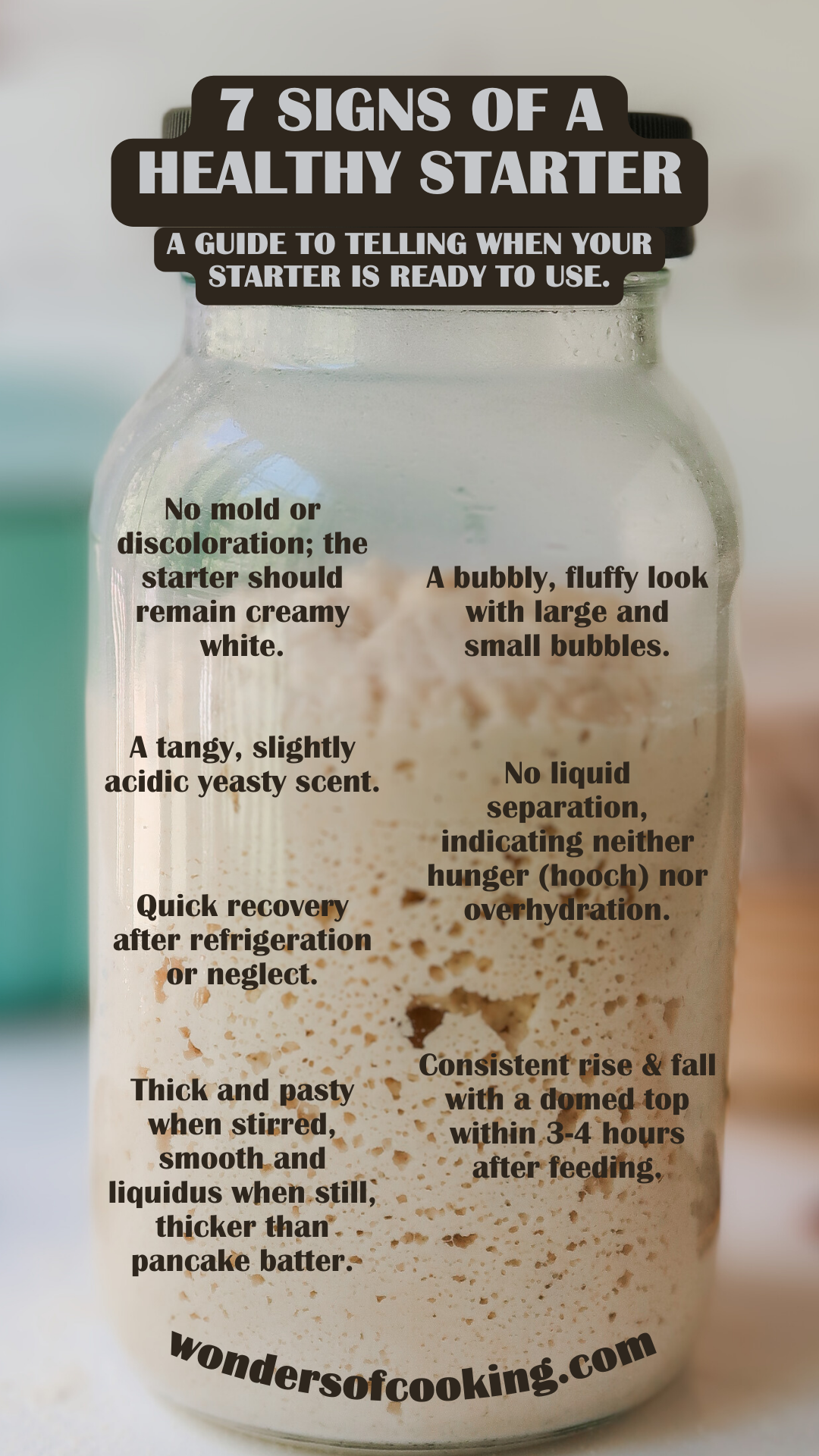
As an Amazon Associate, I earn from qualifying purchases. All thoughts and opinions expressed are my own.
You can also join my Facebook group, Gluten Free Sourdough Baking Recipes and Advice, to share recipes, post photos, and get advice in live time. Currently we have 6000 members and growing!
A healthy gluten-free sourdough starter should exhibit several characteristics that indicate the presence of active wild yeast and lactic acid bacteria. Here are some signs to look for to determine if your sourdough starter is ready to be used in recipes:
1. Aroma
A pleasantly tangy, yeasty aroma is a good sign. A mature sourdough starter often has a slightly sour or acidic smell, indicating the presence of lactic acid produced during fermentation. It shouldn't smell unpleasantly sour or have any off odors, like rancidity or strong vinegar or alcoholic scents. If the starter smells like acetone or nail polish remover, this means it's hungry and needs to be fed more frequently and potentially with a higher ratio of flour and water.
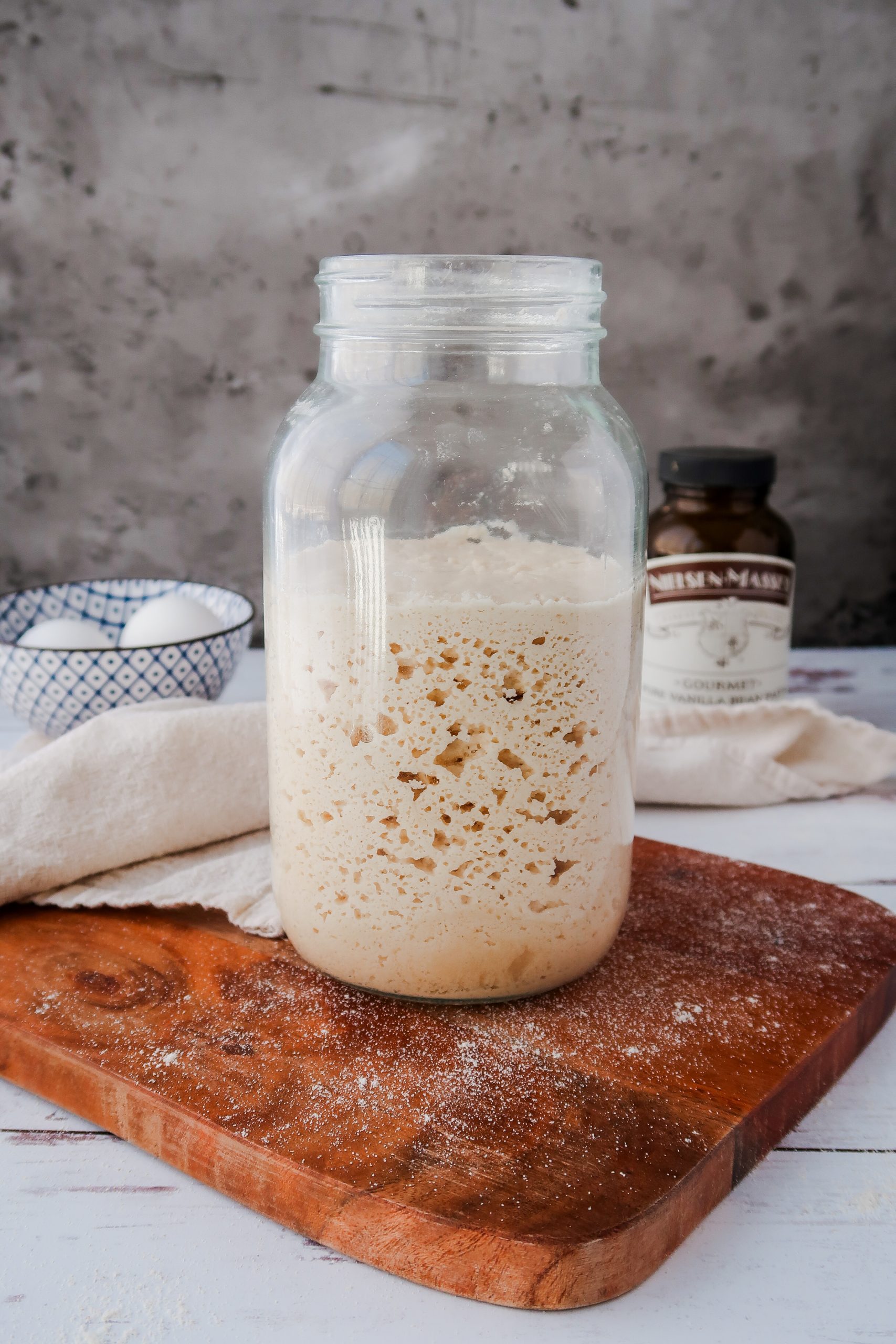
2. Bubbling
A mature gluten-free starter should have a bubbly, fluffy, aerated appearance, indicating that the wild yeast are breaking down the starches and producing carbon dioxide as a byproduct. The bubbles in the starter are a good indicator as to what the future of your bread's crumb may look like. The best starters have a combination of small pinprick bubbles and larger craters.
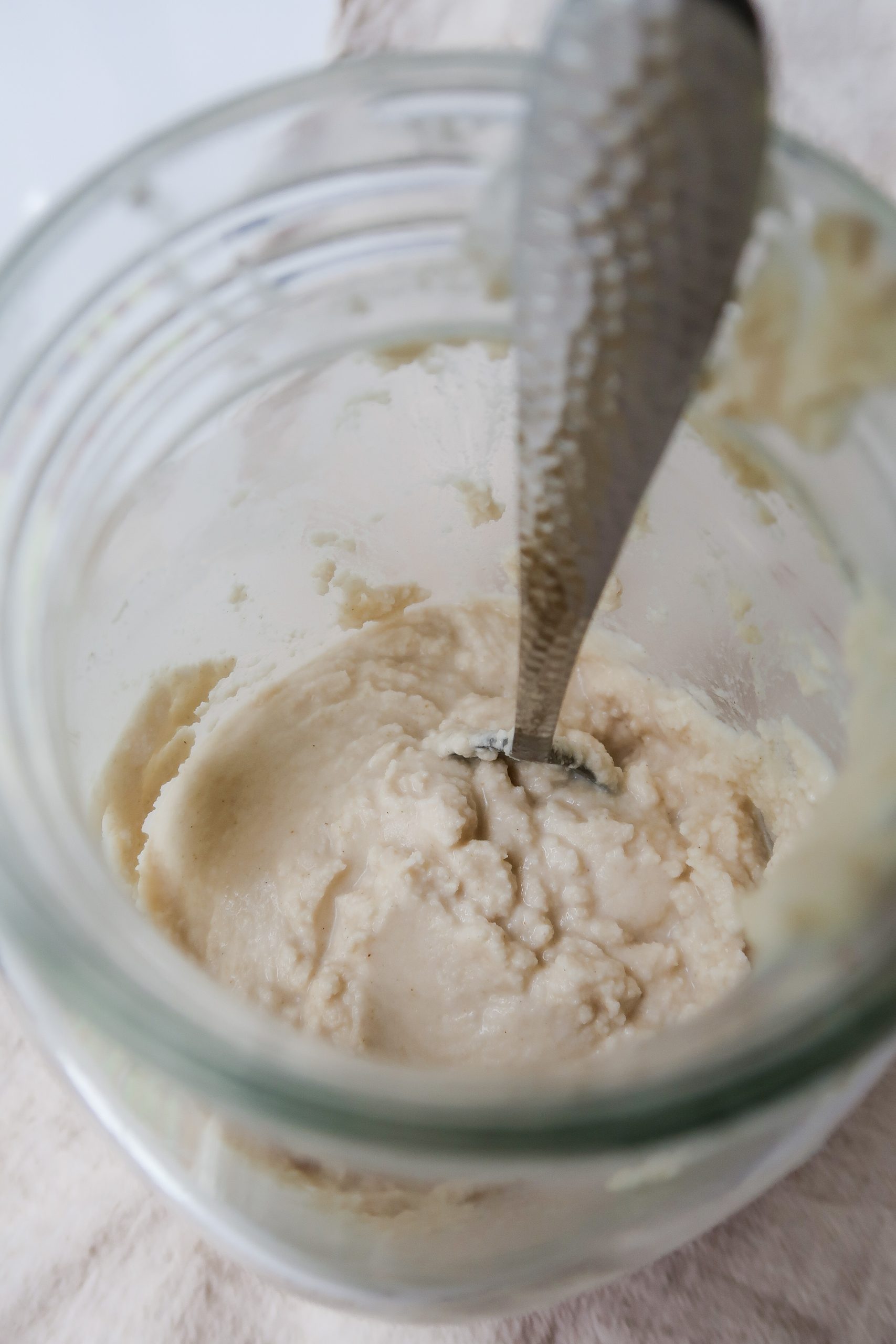
thick and pasty when stirred
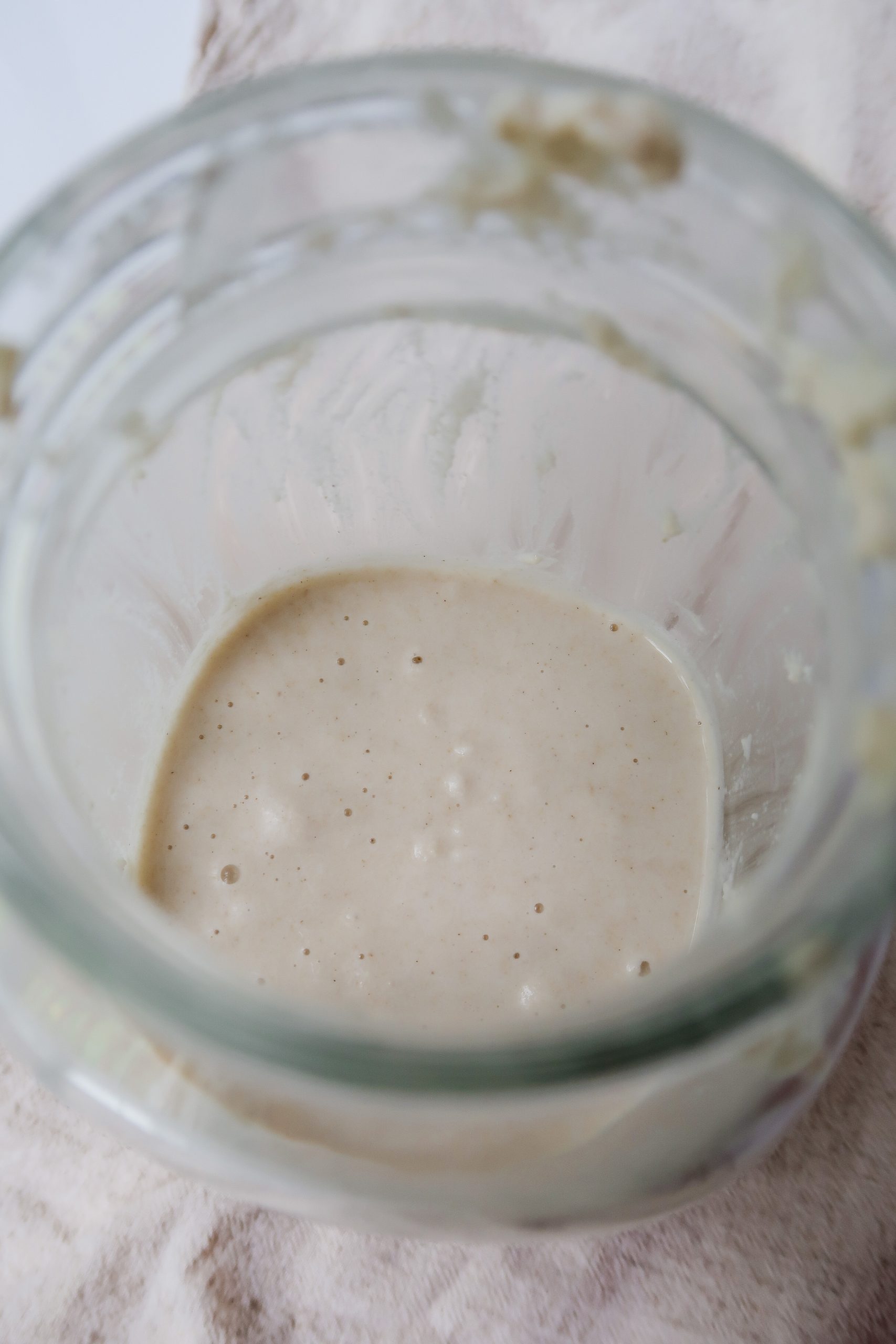
settled flat and smooth when at rest (see how it almost appears to be a liquid, yet it is actually a thick paste?)
3. Consistency and Texture
Getting the consistency right with gluten-free sourdough is important. Aim for a 1:1:1 ratio of starter-to-flour-to-water. A healthy starter should have a thick, pasty consistency when stirred, but settle to a smooth, flat, liquidus surface when at rest. You can give the jar a shake to help it settle, if necessary.
Gluten-free sourdough starters have a different consistency than their regular counterparts - they are much thicker and fluffier. The texture should not be like pancake batter, but a much thicker paste. Not stiff and dry, however.
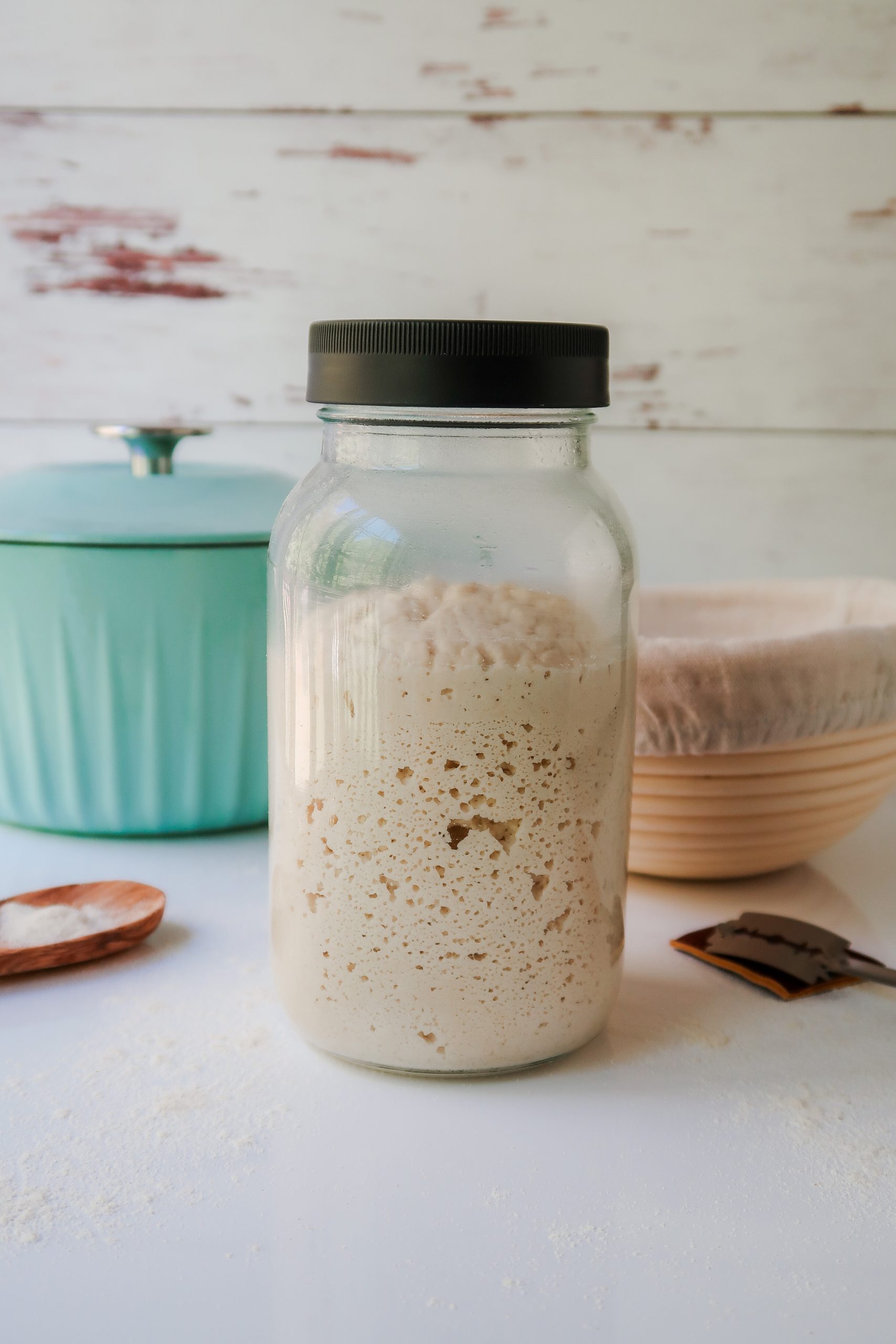
The domed top indicates peak rise. After about an hour, the starter will begin to fall.
4. Consistent rise and fall pattern
When you observe your starter over time, you should see a consistent pattern of rising after feeding and falling as it reaches its peak. This rhythmic behavior indicates a well-balanced microbial community.
A healthy starter kept at the optimal temperature of 78-85 degrees should reach peak rise within 3 to 4 hours. You can tell a starter is at its peak rise by looking to see if it's doubled or has a slightly domed top. Remember that some gluten-free starters may never quite double in size, but rise to about 1.5X.
5. No excess liquid separation
A little bit of grayish or clear liquid (hooch) on top is okay, but if it becomes a repeat offender then it may mean the ratio of flour-to-water is off and the starter is hungry. If you notice liquid separation in the middle of the starter or at the bottom of the jar, this could be hooch or water separation, indicating there is too much hydration.
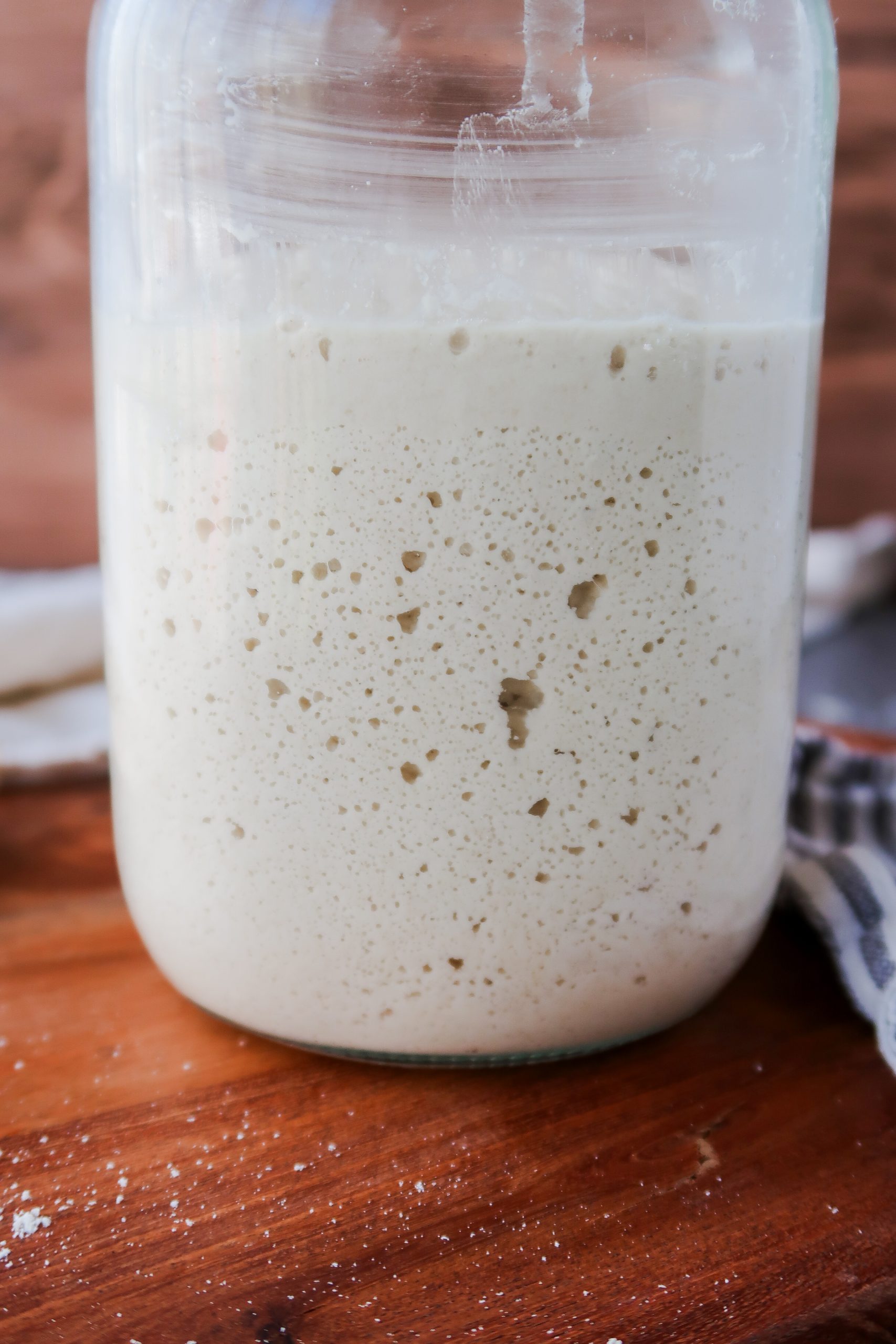
6. No mold or discoloration
A healthy gluten-free sourdough starter should have a consistent color throughout, typically a creamy white, though whole grain starters such as buckwheat or teff might be slightly darker or flecked. Any presence of orange or pink streaks indicate unsafe Serratia marcescens bacteria, and the starter should be thrown out and the jar sanitized. Note that a natural chemical reaction can occur within buckwheat flour that can make it turn pink when it comes into contact with water. It can be hard to discern between buckwheat and Serratia marcescens.
Any kind of fuzzy white, brown, grey, or green spots are mold. If they are just on the surface, they can be scooped off the starter and discarded. If there is a lot of mold throughout the starter or surface, it should be thrown out.
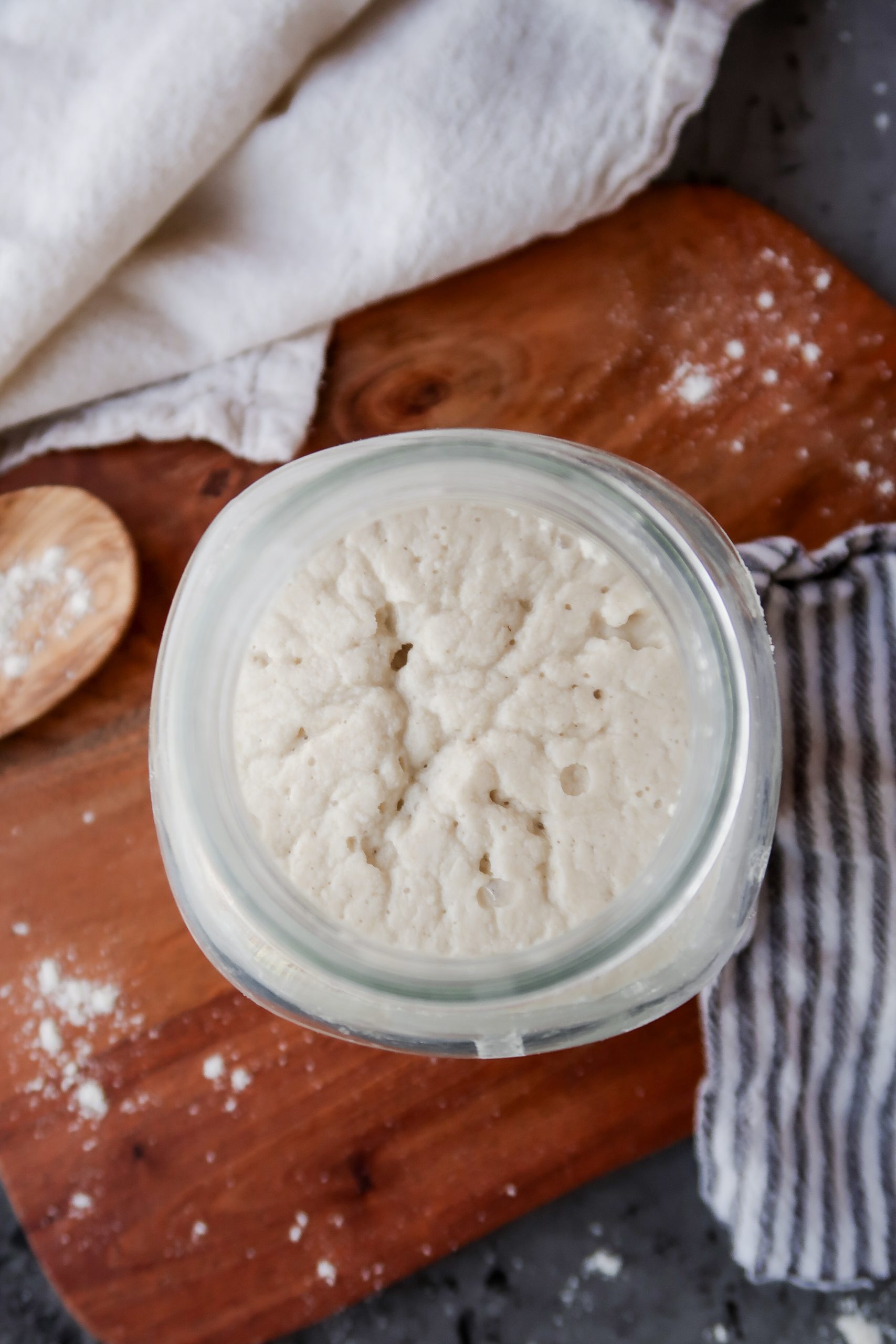
7. Recovery Time
After being refrigerated or neglected, a healthy gluten-free sourdough starter should be able to recover with a few regular feedings. It might take a few days to become fully active again, but this resilience is a good sign that the wild yeast is strong and active. If your starter isn't getting good bubbles or near-doubling in rise, it won't be able to leaven bread.
How do you know when your sourdough starter is ready? Conclusion:
Remember, maintaining a gluten free sourdough starter is as much an art as it is a science. Each starter can have its unique characteristics and behavior, so getting to know your particular starter is important. Regular feeding, observation, and adjustment based on its responses are key to keeping it healthy and active.
By paying attention to these signs, you can assess the health of your sourdough starter and make adjustments to its feeding schedule or conditions if needed.
Don't want to make a starter from scratch?
This Sourdough Starter Culture packet gives you a head start with a dehydrated gluten-free sourdough starter culture and directions to follow to maintain it for years to come. I love this website because there's also cheesemaking, yogurt, kombucha, and fermented vegetable kits. (Use the code WONDERS15X on Cultures For Health's website to get 15% off!) The GF starter is also available for purchase on Amazon here.

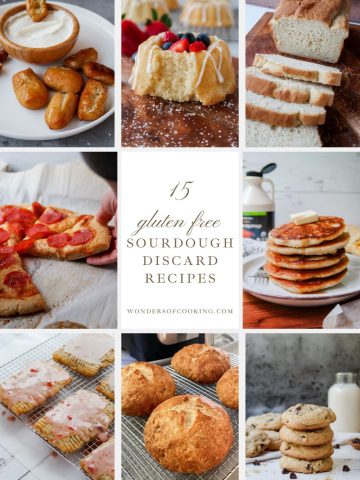
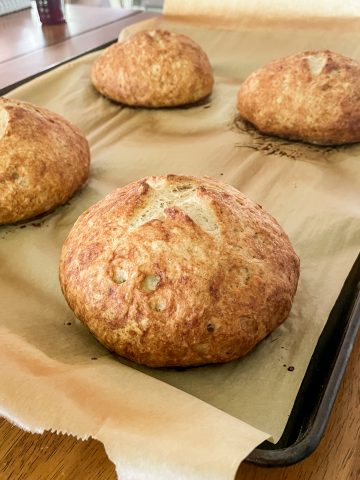


Leave a Reply